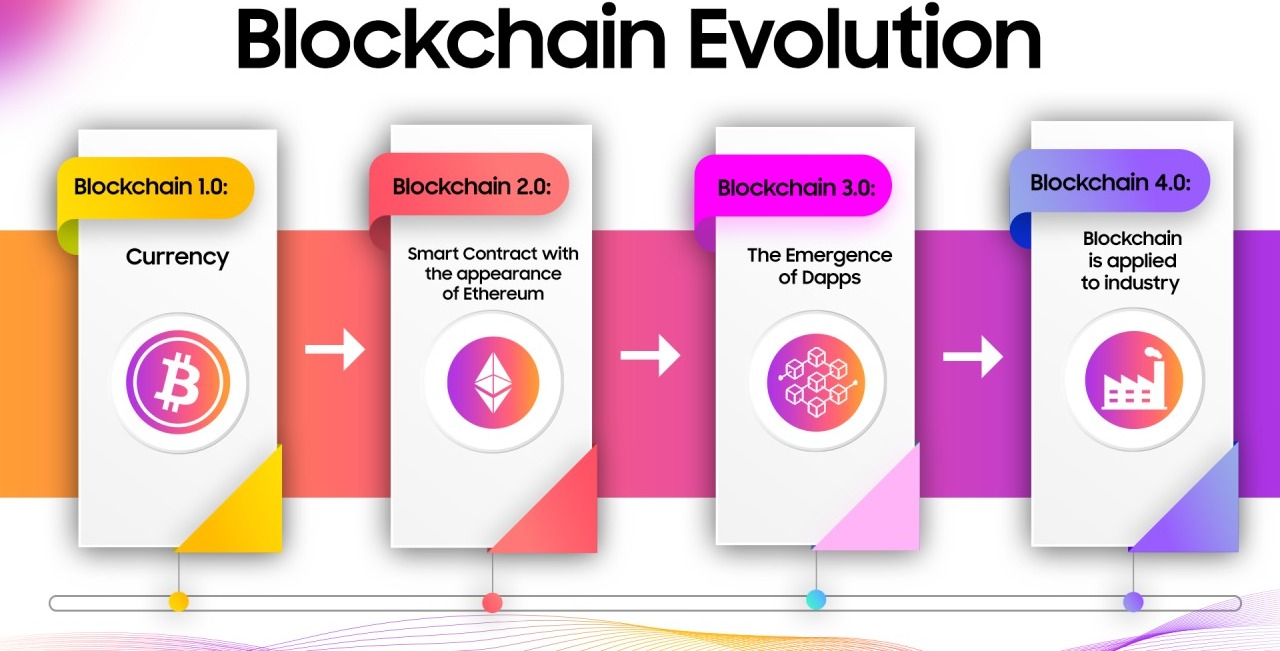Blockchain technology, initially synonymous with Bitcoin, has evolved dramatically since its inception. What began as a decentralized ledger for cryptocurrencies has burgeoned into a multifaceted ecosystem accommodating a spectrum of applications, notably smart contracts. This evolution has altered the landscape of digital transactions and holds profound implications across various industries.
Bitcoin and the Genesis of Blockchain
Bitcoin, introduced in 2008 by an anonymous entity known as Satoshi Nakamoto, marked the genesis of blockchain. It served as a peer-to-peer electronic cash system, leveraging a distributed ledger to record transactions without the need for intermediaries. The blockchain, essentially a chain of blocks containing transactional data, ensured transparency, immutability, and decentralization.

The core architecture of Bitcoin’s blockchain comprises blocks linked cryptographically, forming an unbroken chain. Each block contains a batch of transactions verified through a consensus mechanism — Proof of Work (PoW). Miners compete to solve complex mathematical puzzles, validating transactions and appending new blocks to the chain in return for rewards.
Beyond Bitcoin: Emergence of Altcoins and Diversified Blockchains
Following Bitcoin’s success, a proliferation of alternative cryptocurrencies, or altcoins, emerged. These digital currencies often introduced variations in blockchain protocols, seeking to address limitations seen in Bitcoin’s scalability, transaction speed, and energy consumption. Ethereum, notably, revolutionized the landscape with its programmable blockchain, introducing smart contracts.
Smart Contracts: Enabling Programmable Transactions
Smart contracts, introduced by Ethereum’s blockchain, revolutionized blockchain functionality. These self-executing contracts encode contractual agreements into code, automatically executing when predefined conditions are met. They expand blockchain utility beyond simple monetary transactions to complex, programmable agreements across diverse industries.
Ethereum’s blockchain enables smart contracts through its Turing-complete scripting language, Solidity. Developers can create decentralized applications (dApps) utilizing smart contracts to execute tasks, manage assets, and establish automated agreements, fostering a new paradigm of decentralized, trustless interactions.
Technical Aspects of Smart Contracts
Smart contracts leverage Ethereum’s Virtual Machine (EVM), a decentralized runtime environment executing smart contracts’ code. They consist of functions and data, encapsulated within a contract address on the blockchain. Developers define contract logic, interactions, and events, ensuring security through code audits and standardized development practices.
These contracts are immutable once deployed, and their execution relies on the consensus mechanism. Gas, a unit of Ethereum’s cryptocurrency, is used to compensate for computational efforts, preventing spam and ensuring resource allocation for contract execution.
Evolutionary Challenges and Future Prospects
Despite its advancements, blockchain faces challenges. Scalability remains a concern, with transaction throughput limitations in public blockchains. Issues of interoperability between different blockchain networks also persist. However, ongoing research and development initiatives, including layer-2 solutions and interoperability protocols, aim to address these issues, fostering a more scalable and interconnected ecosystem.
Looking ahead, blockchain’s evolution continues to diversify. Innovations in consensus mechanisms, such as Proof of Stake (PoS) and delegated PoS, aim to enhance scalability and energy efficiency. Additionally, the integration of blockchain with other emerging technologies, like IoT and AI, presents new avenues for exploration and synergy.
The evolution of blockchain from its origins with Bitcoin to the emergence of smart contracts on Ethereum’s platform signifies a paradigm shift in digital transactions. This technological progression extends beyond cryptocurrencies, impacting industries through decentralized applications and programmable agreements. Despite challenges, ongoing research and innovation promise a future where blockchain’s potential is fully realized, reshaping industries and redefining trust in digital interactions.
Conclusion
The evolution of blockchain technology from its inception with Bitcoin to the sophisticated functionalities of platforms like Ethereum illustrates a transformative journey in digital transactions. This progression has not only enhanced the efficiency and security of monetary exchanges but has also introduced innovative concepts such as smart contracts, which enable automated and trustless agreements across various sectors. Despite facing challenges like scalability and interoperability, ongoing advancements in consensus mechanisms and the integration of blockchain with emerging technologies promise a future rich with potential. As industries increasingly adopt decentralized applications, blockchain stands poised to redefine trust and collaboration in the digital age, heralding a new era of transparency and efficiency across multiple domains.
Are you interested to know What is blockchain ? Beginners Guide
Read here :What is blockchain ? Beginners Guide
For more information contact : support@mindnotix.in
Mindnotix Software Development Company


 AI-Taxi App
AI-Taxi App AI-Food App
AI-Food App AI-Property Mgmt App
AI-Property Mgmt App AI-CRM
AI-CRM AI-Fantasy App
AI-Fantasy App
 Web Development
Web Development App Development
App Development Business & Startup
Business & Startup Hire Developer
Hire Developer
 Digital Marketing
Digital Marketing Lead-generation
Lead-generation Creative Agency
Creative Agency Branding Agency
Branding Agency Augmented Reality
Augmented Reality Virtual Reality
Virtual Reality Internet of Things
Internet of Things Artificial Intelligence
Artificial Intelligence Blockchain
Blockchain Chatbot
Chatbot



